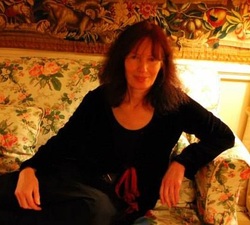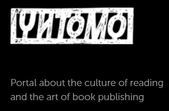
Celtic and Urban Landscapes in Irish Poetry by Linda Ibbotson
Bio:
Linda Ibbotson was born in Sheffield, England, lived in Switzerland and Germany, travelled extensively throughout Europe and Morocco, spent a month in India before settling in County Cork, Ireland 18 years ago.
A poet, artist and photographer her poems have appeared in the Blue Max Review, the Mad Swirl, the Porter Gulch Review 2013, the Inspired Heart, Epistome and Virtuoso. She has had poetry read on Phoenix fm radio in Australia and has been interviewed on CRY104 fm.radio in Ireland. She writes a regular poetry feature for Musicians Together “on line” music magazine and formerly a fortnightly feature for Plum Tree Books focusing on poetry, music and arts events in Ireland.
Linda was invited to read at the Abroad Writers Conference in Lismore Castle Ireland December 2013.
Bio:
Linda Ibbotson was born in Sheffield, England, lived in Switzerland and Germany, travelled extensively throughout Europe and Morocco, spent a month in India before settling in County Cork, Ireland 18 years ago.
A poet, artist and photographer her poems have appeared in the Blue Max Review, the Mad Swirl, the Porter Gulch Review 2013, the Inspired Heart, Epistome and Virtuoso. She has had poetry read on Phoenix fm radio in Australia and has been interviewed on CRY104 fm.radio in Ireland. She writes a regular poetry feature for Musicians Together “on line” music magazine and formerly a fortnightly feature for Plum Tree Books focusing on poetry, music and arts events in Ireland.
Linda was invited to read at the Abroad Writers Conference in Lismore Castle Ireland December 2013.
There is a gaelic saying passed down through generations:
‘Is maith an scealai an aimsir’ meaning ‘Stories become embellished with time’
As Irelands heart beats through its landscape and heritage, myths and legends are profoundly expressed in the field of arts, music and literature.
Poets, once belonging to the privileged classes were of extreme importance in Celtic culture in keeping the myths and legends, such as Dagdas Harp, The Children of Lir and Brigid, alive in verse. Newgrange, (a monument and passage tomb at Boyne, built around 3,200 BC), beehive huts of the Dingle Peninsular and Celtic crosses were all landmarks and symbols of the Celtic world that was highly deemed with reverence. It was the landscape and love of nature that provided a plethora of inspiration.
Flaggy Shore, an area near the unique rocky landscape of the Burren, County Clare is the focus of the poem quoted here by Seamus Heaney.
Postscript
And some time make the time to drive out west
Into County Clare, along the Flaggy shore
In September or October, when the wind
And the light are working off each other
So that the ocean on one side is wild
With foam and glitter, and inland among stones
The surface of a slate-grey lake is lit
By the earthed lightning of a flock of swans,
Their feathers roughed and ruffling, white on white,
Their fully grown, headstrong-looking heads
Tucked or cresting or busy underwater,
Useless to think you'll park and capture it
More thoroughly. You are neither here nor there,
A hurry through which known and strange things pass
As big soft buffetings come at the car sideways
And catch the heart off guard and blow it open.
The Metrical Dindshenchas or Lore of Places is a surviving anthology of 176 poems of Irish Verse dating from as early as the 11th century, focusing on legends in significant places, and landscapes in Ireland. Burial cairns are the subject of Derek Mahons’ A Stone Age Figure Far Below, also Lir, as mentioned in his poem Beyond Howth Head . W B Yeats and poets such as Pierce Ferriter, one of the Blasket Isle poets of County Kerry drew on the richness and color of the Irish language and these legacies.
Patrick Kavanagh, Micheal Hartnett and more contemporary poets - Michele Vassal's "Anam cara", "Because he was my only son", and "Love in Corca Dhuidhne", capture the spirit of this beautiful land. In Paul Casey's poem "Marsh" he so eloquently describes the development of Cork city from bogland to urban metropolis.
Here is the first stanza -
I was all bog and bits of islands,
my bird-heavy mane of reed
a river of lyrical russet,
a Celtic hunter slowing his currach
to the heartbeat of a wayward doe.
In Adam Wyeth's newly released book The Hidden World of Poetry - Unravelling Celtic Mythology in Contemporary Irish Poetry, he focuses on the connection between the ancient legends and contemporary poetry as introduced here by Paula Meehan:
"This book connects us back to a Celtic dreamtime through mythology which is, no more, no less than the poetry of the ancestors. It reaffirms the vestigial and, paradoxically, central role of ancestral thought in contemporary Irish poetry in general, and in this generous selection from contemporary makers in particular. It illustrates the continuity of the trade back through the technologies, virtual and print, into the oral tradition. We can hear back to the bronze age culture of the Milesians, and read back to the first writing down of the myths and legends in the 6th to the 11th centuries. So Adam’s book is both nourishment and boon for readers in the English language who might not have access to the lore in the mother tongue."
Celtic mythology is far from a dead or peripheral part of our history; its narratives and traditions are deeply intertwined into the fabric of our daily lives. As each generation re-visits these ancient tales, our personal and expanding lives offer fresh interpretations of these age-old myths.
Including poems by Eavan Boland, Eiléan Ní Chuilleanáin, Nuala Ní Dhomhnaill, Bernard O’Donoghue, Paul Durcan, John Ennis, Desmond O’Grady, Seamus Heaney, Derek Mahon, Mary O’Malley, Paula Meehan, Patricia Monaghan, Paul Muldoon, Maurice Riordan, Leanne O’Sullivan and Matthew Sweeney.”
Bringing us into the present day, Jonathan Swift, W B Yeats, Kavanagh and James Joyce feature alongside contemporary poets in Dublins urban landscape in an invitation to explore street by street this literary city. Seamus Heaneys’ poems Beacons at Bealtaine , Dublin 4 and Noel Duffys’ Daisy Chain feature in the recently published If Ever You Go : A Map of Dublin in Poetry and Song available from Dedalus Press. A host of well known poets in this anthology include among many others Derek Mahon, Hugh Mcfadden, Alan Jude More and Enda Coyle-Greene .
May the flame of ‘stories embellished with time’ be kept fuelled with the future generations of Irish poets .
Derek Mahon- A Stone Age Figure Far Below and Beyond Howth Head- Selected Poems 1962-1978
Michele Vassal- Anam cara,, Because he was my only son, and Love in Corca Dhuibhne- A Taste For Hemlock
Paul Casey- Marsh- home more or less- Salmon Poetry
Adam Wyeth- Hidden World of Poetry- Unravelling Celtic Mythology in Contemporary Irish Poetry- Salmon Poetry
Noel Duffy- Daisy Chain- In The Library of Lost Objects- Ward Wood Publishing
If Ever You Go : A Map of Dublin in Poetry and Song- Dedalus Press
‘Is maith an scealai an aimsir’ meaning ‘Stories become embellished with time’
As Irelands heart beats through its landscape and heritage, myths and legends are profoundly expressed in the field of arts, music and literature.
Poets, once belonging to the privileged classes were of extreme importance in Celtic culture in keeping the myths and legends, such as Dagdas Harp, The Children of Lir and Brigid, alive in verse. Newgrange, (a monument and passage tomb at Boyne, built around 3,200 BC), beehive huts of the Dingle Peninsular and Celtic crosses were all landmarks and symbols of the Celtic world that was highly deemed with reverence. It was the landscape and love of nature that provided a plethora of inspiration.
Flaggy Shore, an area near the unique rocky landscape of the Burren, County Clare is the focus of the poem quoted here by Seamus Heaney.
Postscript
And some time make the time to drive out west
Into County Clare, along the Flaggy shore
In September or October, when the wind
And the light are working off each other
So that the ocean on one side is wild
With foam and glitter, and inland among stones
The surface of a slate-grey lake is lit
By the earthed lightning of a flock of swans,
Their feathers roughed and ruffling, white on white,
Their fully grown, headstrong-looking heads
Tucked or cresting or busy underwater,
Useless to think you'll park and capture it
More thoroughly. You are neither here nor there,
A hurry through which known and strange things pass
As big soft buffetings come at the car sideways
And catch the heart off guard and blow it open.
The Metrical Dindshenchas or Lore of Places is a surviving anthology of 176 poems of Irish Verse dating from as early as the 11th century, focusing on legends in significant places, and landscapes in Ireland. Burial cairns are the subject of Derek Mahons’ A Stone Age Figure Far Below, also Lir, as mentioned in his poem Beyond Howth Head . W B Yeats and poets such as Pierce Ferriter, one of the Blasket Isle poets of County Kerry drew on the richness and color of the Irish language and these legacies.
Patrick Kavanagh, Micheal Hartnett and more contemporary poets - Michele Vassal's "Anam cara", "Because he was my only son", and "Love in Corca Dhuidhne", capture the spirit of this beautiful land. In Paul Casey's poem "Marsh" he so eloquently describes the development of Cork city from bogland to urban metropolis.
Here is the first stanza -
I was all bog and bits of islands,
my bird-heavy mane of reed
a river of lyrical russet,
a Celtic hunter slowing his currach
to the heartbeat of a wayward doe.
In Adam Wyeth's newly released book The Hidden World of Poetry - Unravelling Celtic Mythology in Contemporary Irish Poetry, he focuses on the connection between the ancient legends and contemporary poetry as introduced here by Paula Meehan:
"This book connects us back to a Celtic dreamtime through mythology which is, no more, no less than the poetry of the ancestors. It reaffirms the vestigial and, paradoxically, central role of ancestral thought in contemporary Irish poetry in general, and in this generous selection from contemporary makers in particular. It illustrates the continuity of the trade back through the technologies, virtual and print, into the oral tradition. We can hear back to the bronze age culture of the Milesians, and read back to the first writing down of the myths and legends in the 6th to the 11th centuries. So Adam’s book is both nourishment and boon for readers in the English language who might not have access to the lore in the mother tongue."
Celtic mythology is far from a dead or peripheral part of our history; its narratives and traditions are deeply intertwined into the fabric of our daily lives. As each generation re-visits these ancient tales, our personal and expanding lives offer fresh interpretations of these age-old myths.
Including poems by Eavan Boland, Eiléan Ní Chuilleanáin, Nuala Ní Dhomhnaill, Bernard O’Donoghue, Paul Durcan, John Ennis, Desmond O’Grady, Seamus Heaney, Derek Mahon, Mary O’Malley, Paula Meehan, Patricia Monaghan, Paul Muldoon, Maurice Riordan, Leanne O’Sullivan and Matthew Sweeney.”
Bringing us into the present day, Jonathan Swift, W B Yeats, Kavanagh and James Joyce feature alongside contemporary poets in Dublins urban landscape in an invitation to explore street by street this literary city. Seamus Heaneys’ poems Beacons at Bealtaine , Dublin 4 and Noel Duffys’ Daisy Chain feature in the recently published If Ever You Go : A Map of Dublin in Poetry and Song available from Dedalus Press. A host of well known poets in this anthology include among many others Derek Mahon, Hugh Mcfadden, Alan Jude More and Enda Coyle-Greene .
May the flame of ‘stories embellished with time’ be kept fuelled with the future generations of Irish poets .
Derek Mahon- A Stone Age Figure Far Below and Beyond Howth Head- Selected Poems 1962-1978
Michele Vassal- Anam cara,, Because he was my only son, and Love in Corca Dhuibhne- A Taste For Hemlock
Paul Casey- Marsh- home more or less- Salmon Poetry
Adam Wyeth- Hidden World of Poetry- Unravelling Celtic Mythology in Contemporary Irish Poetry- Salmon Poetry
Noel Duffy- Daisy Chain- In The Library of Lost Objects- Ward Wood Publishing
If Ever You Go : A Map of Dublin in Poetry and Song- Dedalus Press




